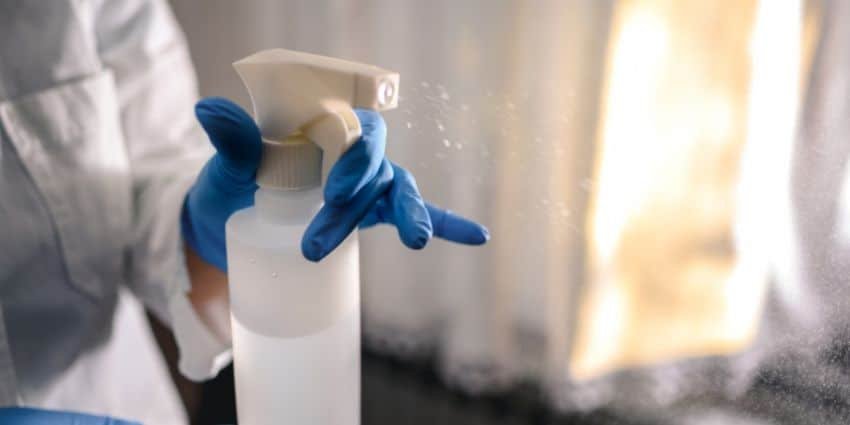In today’s interconnected world, maintaining a clean and healthy office environment is crucial to prevent the spread of infectious diseases like measles and other viruses. These viral infections pose significant risks not only to individual health but also to organizational productivity. An outbreak can lead to increased absenteeism, reduced morale, and potential long-term health implications for employees. Therefore, implementing effective disinfection strategies is essential for safeguarding the health of everyone in the office. This article explores various approaches to mitigating the spread of viruses in office settings, emphasizing the importance of cleanliness and hygiene.
Contents
Understanding Viral Spread
Viral infections such as measles can easily spread in office environments due to close interactions and shared surfaces. Measles, for example, is a highly contagious virus that can linger in the air and on surfaces for hours. In office settings, common touchpoints like door handles, elevator buttons, keyboards, and communal kitchen areas become hotspots for viral transmission. High-traffic areas such as meeting rooms, break rooms, and reception areas are particularly susceptible to harboring pathogens, given their frequent use by multiple individuals.
Viruses spread through respiratory droplets when an infected person coughs or sneezes. These droplets can settle on surfaces, where they remain infectious for various periods depending on the virus type. Inadequate ventilation and limited natural light in offices can exacerbate the spread, as these conditions may prolong the viability of viruses. Understanding these transmission pathways is crucial for developing effective disinfection protocols and minimizing infection risks in the workplace.
Disinfection Best Practices
To effectively combat viruses like measles, offices should employ a combination of disinfection agents and methods. Effective disinfectants include bleach solutions, alcohol-based sprays (with at least 70% alcohol), and hydrogen peroxide-based products. These agents are known to inactivate a wide range of pathogens, including viruses.
When applying disinfectants, it is imperative to follow the manufacturer’s instructions to ensure efficacy. This includes adhering to the recommended contact time, which is the duration the surface must remain wet with the disinfectant to effectively kill pathogens. Additionally, proper dilution ratios must be observed to prevent surface damage and maintain safety for users.
Regular training on the correct use of disinfectants can empower cleaning staff and employees to effectively reduce viral load in the office. This, combined with using personal protective equipment (PPE) like gloves and masks during cleaning, can further bolster safety and disinfection outcomes.
Regular Cleaning Schedule
Establishing a regular cleaning schedule is crucial for maintaining a virus-free office environment. High-touch surfaces such as desks, keyboards, and phones should be disinfected at least daily. Communal spaces like kitchens and bathrooms require more frequent cleaning, ideally several times a day, due to their higher contamination risk.
Special attention should be given to meeting rooms, which should be cleaned before and after each use. During viral outbreaks, increasing the frequency of disinfection in all areas is advisable. Additionally, deep cleaning sessions should be scheduled periodically to ensure comprehensive sanitation.
A proactive cleaning schedule not only helps in maintaining cleanliness but also instills confidence among employees, demonstrating the organization’s commitment to their health and safety.
Employee Engagement
Employees play a pivotal role in maintaining a clean and healthy workspace. Encouraging personal hygiene practices such as regular handwashing, using hand sanitizers, and proper respiratory etiquette (covering coughs and sneezes) can significantly reduce the spread of infections.
Organizations should foster a culture of openness where employees feel comfortable reporting potential health risks or breaches in hygiene protocols. Providing training sessions on disinfection practices and the importance of hygiene can empower employees to take responsibility for their health and the well-being of their colleagues.
Additionally, placing hand sanitizer stations and signage promoting hygiene practices in strategic locations can remind employees of their role in maintaining a safe office environment.
Role of Technology
Technology plays an increasingly important role in enhancing traditional cleaning methods. UV light disinfection is a powerful tool that can inactivate viruses by damaging their DNA or RNA, preventing replication. UV light devices can be used to sanitize surfaces and air in offices, particularly in hard-to-reach areas.
Electrostatic sprayers offer another technological advancement in disinfection. These devices charge disinfectant particles, allowing them to wrap around surfaces evenly and ensure comprehensive coverage. This method is highly efficient, especially in large office spaces with numerous surfaces.
Incorporating these technologies into regular cleaning practices can significantly improve disinfection effectiveness, providing an extra layer of protection against viral infections.
Preventing the spread of measles and other viral infections in the office requires a comprehensive approach that combines effective disinfection practices, regular cleaning schedules, employee engagement, and advanced technology. By understanding how viruses spread and implementing strategic cleaning protocols, organizations can create a safer, healthier work environment. A proactive approach not only protects employees’ health but also ensures continued productivity and peace of mind in the workplace.


